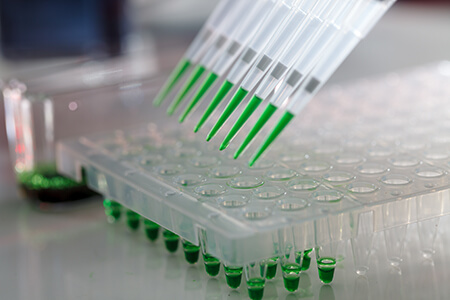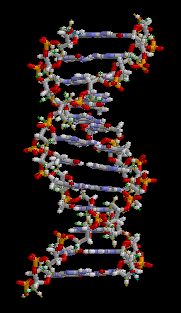This is a lesson summary. The full lesson can be viewed by purchasing an online course subscription.
Learning Objective
In this lesson we will learn about the structure of DNA – the molecule that carries genetic information in living things.
Learning Outcomes
By the end of this lesson you will be able to:
- Describe the structure of nucleotides – the subunits of DNA molecules.
- Describe the structure of DNA molecules, including:
- The types of bonds that hold DNA molecules together.
- The base-pairing rules in DNA.
- DNA’s double helix structure.
- Explain how DNA molecules carry a ‘genetic code’.

(Image: luchschenF, Adobe Stock)
Lesson Summary
- Living things carry genetic information in large molecules called DNA (deoxyribonucleic acid ), which is packaged into chromosomes in the nuclei of cells.
- DNA molecules are made up of subunits called nucleotides, which consist of a sugar, a base and a phosphate.
- There are four different nucleotides in DNA, each with a different base – G, C, A or T.
- Nucleotides can join together in two ways.
- Firstly, nucleotides can join by phosphodiester bonds (covalent bonds) between sugars and phosphates, resulting in single-stranded DNA.
- Secondly, nucleotides can join by hydrogen bonds (weaker bonds) between bases, resulting in double-stranded DNA.
- The hydrogen bonding between bases on different strands of DNA occurs according to the base-pairing rules – only G-C and A-T pairs can form.
- Double-stranded DNA molecules have a twisted structure known as a double helix.
- The order of the four different nucleotides in DNA molecules determines the genetic make-up of an organism.

(Image: brian0918, Wikimedia Commons)
(Header image: svetlaborovko, Adobe Stock)
